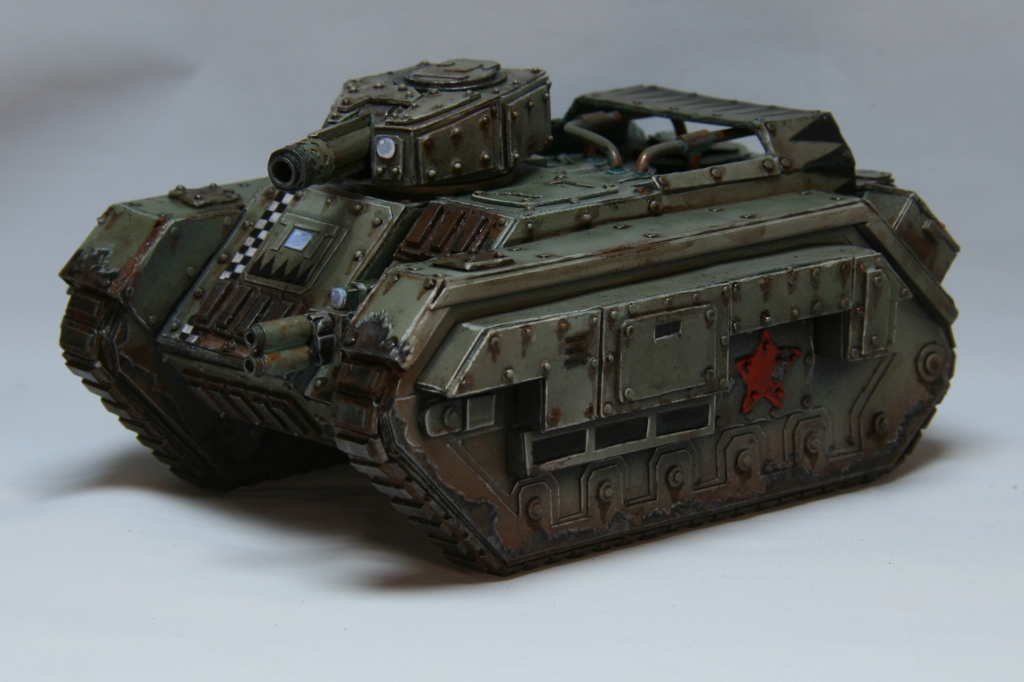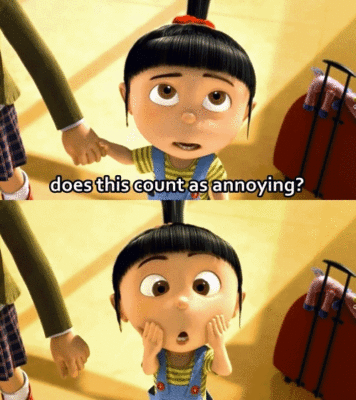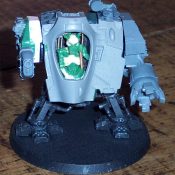The long-term regulars amongst you know that I have been running a Rebel Grot army using the Imperial Guard Codex. The rapid release of the Astra Militarum Codex, 7th edition rules, and upcoming Ork Codex has me putting a lot of thought into how I fit my vision of my Counts As Army (CAA) into the game in a way that is fun for me and my opponents.
As I am working through my own decisions I thought I would take the time to talk about Counts As armies and some guidelines I follow when building them.
What is a “Counts As” Army?
To put it simply a “Counts As” means you are using certain models to “Count As” other models. It is common for people to use converted models to count as some special character. A CAA uses the same concept, but takes it to a larger scale.
This could be as simple as creating your own paint scheme for your Space Marines and saying that they count as Space Wolves, as I did with my Reavers.
Or you could be using models from one army to count as a different army such as my Rebel Grots using Astra Militarum rules. These are just two of countless examples.

There are plenty of reasons to build a CAA. Maybe you are trying to bring something from the fluff to the table that isn’t represented by the current model range, or maybe you just have your own ideas about what you want to field.
It is a great way to expand your hobby skills as you work through novel ways to represent the units and wargear you want to field. It is very rewarding to field a unique army that looks good and still makes sense to your opponent.
Fluff or Function first?
Every army has some balance of Fluff vs. Function. When you’re using a standard codex army it is pretty easy to maintain this balance: if it is in the codex it fits the fluff!
With a CAA this can be a little trickier because you need to fit the back story of your force into the army composition choices you make. You are wandering into uncharted territory and there are certain risks involved with that.
It is not quite as simple as the horse and cart analogy, but when playing a themed army you need to have your theme before your list.
If you build the toughest list you can think of then create some fluff around that it looks to other players that you are trying to justify your choices to convince people you’re not just there to beat face.
On a side note, if you are just looking to beat face you should be open about that up front. Some people may not want to play against you, but those that do will know to bring their most competitive list prepare to enjoy a tough game.
While it is important to have your theme and/or back story in mind before building your list, you also want to avoid handicapping yourself too much.
The units you exclude can add as much flavor to your army as the units you emphasize, but if you can never win a game because you’ve written all of the most effective units out of your storyline, you aren’t likely to have a lot of fun.
You may need to relax certain principles if you find they are restricting your enjoyment. You may also come up with interesting additions to your story explain new units that you add or units that you rely on heavily.
Model Confusion
One of the major risks you face with a CAA is confusion over what represents what. It can become frustrating to your opponent if they have to constantly ask what model is what or if they are repeatedly surprised by how certain models work.
By definition a CAA will probably contain models that do not match what people expect to seem but you should make an effort to ensure that it is easy for your opponent to keep track.
There are a few guidelines I follow in this area:
1) Get some decent models!
Don’t tell me that the green cheapo army men represent tactical marines and the blue ones represent terminators. Unless you’re fielding a “Toy Story” force, and you’ve gone through some honest effort to make sure they are the right size, and are on the right bases, and you have a badass Buzz Lightyear conversion in command, that’s just not going to fly with most players.

I am not saying you have to spend a bunch of money and field only GW models or anything, but you need to have models that are about the right size and look like you’ve put some effort into.
If you are looking to save money then do some scratch building and converting, don’t empty your junk drawer onto the table and start assigning unit names.
I’m also talking long term here. As long as you’ve got your opponent’s permission I fully support proxy play testing before committing time and money to a model.
I’ve played games where someone has fielded an appropriately sized water bottle as a riptide because he wanted to try it before buying it, and would happily do so again. But, once you’ve committed to the army you really should find something reasonable to play with.
2) Never use identical models to represent units with very different stats.
You should never look like you’re playing an elaborate shell game with your models. You may have a lot of similar models running around, but there should be something to identify characters, special weapons, etc.

You should also avoid using similar models to represent units that should be very different, I should be able to recognize that your Rhino and your Land Raider are different vehicles. If you are using models from Faction A to represent models from Faction B, don’t ally those same units in the list together.
For example, I have used Killa Kans to represent Armored Sentinels in my Rebel Grots list, but I would never do so while bringing Ork allies.
3) Be careful with mixed Factions.
You may want to incorporate more than one faction in your army for one reason or another, but this can become confusing if you’ve modeled both Factions to fit the same theme. This isn’t as big a deal if you’re using Battle Brothers, but it should be easy to tell Desparate Allies apart.
4) Use consistency to avoid confusion.
If you use the same weapon type to represent all of your plasma guns it will be easier for your opponent to remember that they are all plasma guns. If you are using wings to represent jump packs then don’t put wings on a model that doesn’t have a jump pack.
You may have some degree of variation to achieve the overall look you want, but the more consistent indicators you can include the easier it will be on you and your opponent to keep track.
The Golden Rule: Both players should have fun
Warhammer 40,000, like any game, is a form of social contract. You and your opponent have agreed to follow a set of written and unwritten rules to engage in a social activity that is expected to provide enjoyment for both participants.
A CAA by its very nature will be bending some of the unwritten rules because it does not match what other players expect to see. In my experience, most players are excited to play against an army full of conversions and scratch builds, but few enjoy playing when it’s impossible to keep track of what does what.
Keep this in mind when building your counts as models and everyone can enjoy the experience.
Personally, I love variety created by a well executed model substitution. What are your thoughts on “counts as” models? Do you have any advice or pet peeves that I’ve missed?
- How to Make a Wargaming Table & Terrain Cheaply & Easily - November 6, 2017
- First Rebel Grot Armored Sentinel Painted! - December 19, 2016
- Assassinorum Execution Force Product Review from Games Workshop - May 6, 2015





The issue one of my friends had playing against your rebel grot army in 5th ed at Open War was that your hellhounds were wider and shorter than regular models and your Chimeras were thinner and longer. You won on objectives I seem to remember because the models blocked off objectives. This isn’t anything personal against you but if your going to use counts as models make sure that they are the same dimensions that they would normally be
I for one love seeing an army such as your rebel grit force. When I see someone who spent hours upon hours making models for an army with clear conversions I find it as a treat. I tend to spend most time goggling over the models than paying attention to tactics
Don’t get me wrong he thought your army was fantastically done but was irritated that the size of the models prevented him from the outcome he was looking for
Thanks. Half the fun of converting models is showing them off. Most players enjoy the added fun of an interesting army and it’s a great way to start conversations.
I agree that inappropriate proxies can negatively impact the feel of a game. I am all for stuff like that when you want to try something out before buying the models or switching armies but you really need to clear it with your opponent before hand. It’s not appropriate to show up at a tournament or pick-up game with a stranger and plunk down your ork horde, then start explaining that the shoota boys are bloodletters and the slugga boys are daemonettes…
Edit: jut realised this isn’t the player I thought it was. Many apologies!
No problem, it’s an easy mistake to make. There aren’t a lot of Rebel Grot armies floating around.
I agree with you that it is best to keep dimensions as close to the actual models as possible. 40k is a game where a fraction of an inch can make a significant difference in the outcome of a game so you have to be careful to avoid modelling for advantage even if it wasn’t intentional. If you’re just playing against friends and regular opponents it might not be as big a deal but when you’re playing a large event against a lot of strangers it is easy to leave someone feeling cheated.
I love counts-as and make use of it mostly for HQs, especially named characters. I think the only entire unit I’ve done as a counts-as is my Chaos Spawn but those are easily recognizable for what they are and I field nothing else that looks like them that I claim to be something else.
As you said, consistency is key. Even if you have models that are nothing like the originals, as long as each unit that uses the same models represents the same unit then you can get away with it. Same with weapons, as you said. Consistency, consistency, consistency.
I agree with Benito. It’s awesome to face off against a counts-as army that’s well done. It adds a cinematic feel that can be lost when facing the same old thing again and again.
You’ve got a lot of cool counts as models. The spawn unit you mentioned is great, and I really like the bull you are using as your lord’s juggernaut. It’s easy to keep track of what the unit is supposed to be. Consistency keeps things clear but you’ve still added a lot of unique character to your army.
Thanks.
I do have some thinking to do when the new Ork codex drops. I have 3 old school Trukks and one scratch-built one and the scratch-built one is fairly larger than the others. So, do I eventually just buy all new Trukks (which are awesome kits), or turn my scratch-built Trukk into something else entirely with some more work?
Leaning on the latter, it’s easier, cheaper and more fun, but those old Trukks are tiny and finding more in the future to expand won’t be easy. So, I may find myself needing to buy the current kits at some point and then I’ll have a mess of vehicles all over the place in terms of size.
I have other such choices I need to make as well within the army. Not quite counts-as but in the vein of consistency and not modeling for advantage. Not that anyone would think I’m being a douchebag with my current collection (I don’t think), but where I have so many scratch-builds in the army I want to avoid confusion.
Orks are a bit different from most armies since according to their fluff all Ork technology “counts-as” something that works!
Seriously though, the Orks went so long with so many models absent that the guidelines for vehicle size are pretty vague. The few models that have been around have changed so significantly in size that they’re barely compatible. I use the original battlewagon as a trukk and the gorkamorka era trukks as buggies. Add all of that to the inherently ramshackle nature of Ork armies and people allow a lot of leeway on vehicle size. As long as it all looks good to you and it doesn’t look like you’re modelling for advantage I don’t think you have much to worry about.
This is a great look at “counts as”. If there’s one thing that I’ve worked to achieve with my Hordebloods, it’s that everything is easily visible as their original models. I’ve done all conversions on to the models they’re supposed to be and avoided confusion by ensuring key traits of those models are still visible. The most coverup was done to my Voidwalker since he’s surrounded by gel.. but even then, he’s holding the stone and key elements of his armour are visible.
Thanks! I’m not familiar with Hordebloods but I always enjoy a good conversion regardless of game system. Do you have pictures posted somewhere?
Incorporating key traits of the original model can go a long way make it easy for people to know what does what. With my Rebel Grots I try to use the correct models for all of the special weapons or at least scratch build something that is recognizable as the same weapon so it is easier for people to know what is going to do what. I also try to keep my vehicles close enough to the Imperial counterpart that it is easy to recognize a chimera or Leman Russ. If people aren’t confused or frustrated by your army it is much easier for them to appreciate the work you’ve done and enjoy the game.
Yup, exactly.
Here they are:
http://www.wargamingtradecraft.com/2013/05/hordebloods.html
Those look great! Well converted and well painted.
This is the right way to look at counts as, conversion work is always a joy to see, but only when its done with clear intent and time invested. Lazy converting just to justify taking a unit is not cool. Consistency is key and clearly being able to show your opponent what the units are. The theme should always come before the list, and units taken should fit into that theme.
Thanks, I’m glad you agree. When handled properly, conversions make the game more fun for both sides.
No prob, conversions are a lot of fun and a part of the game. Its when its used as an excuse that it becomes a problem.